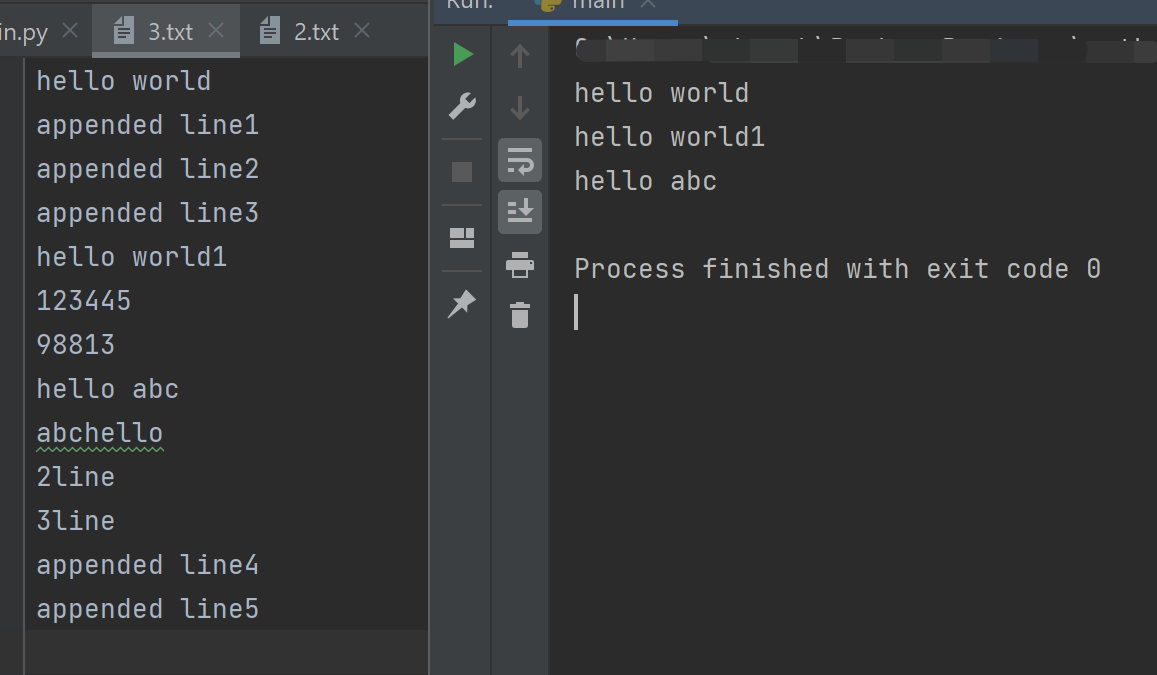python - regex 正则表达式
regular expressions (RegEx), and use Python's re module to work with RegEx
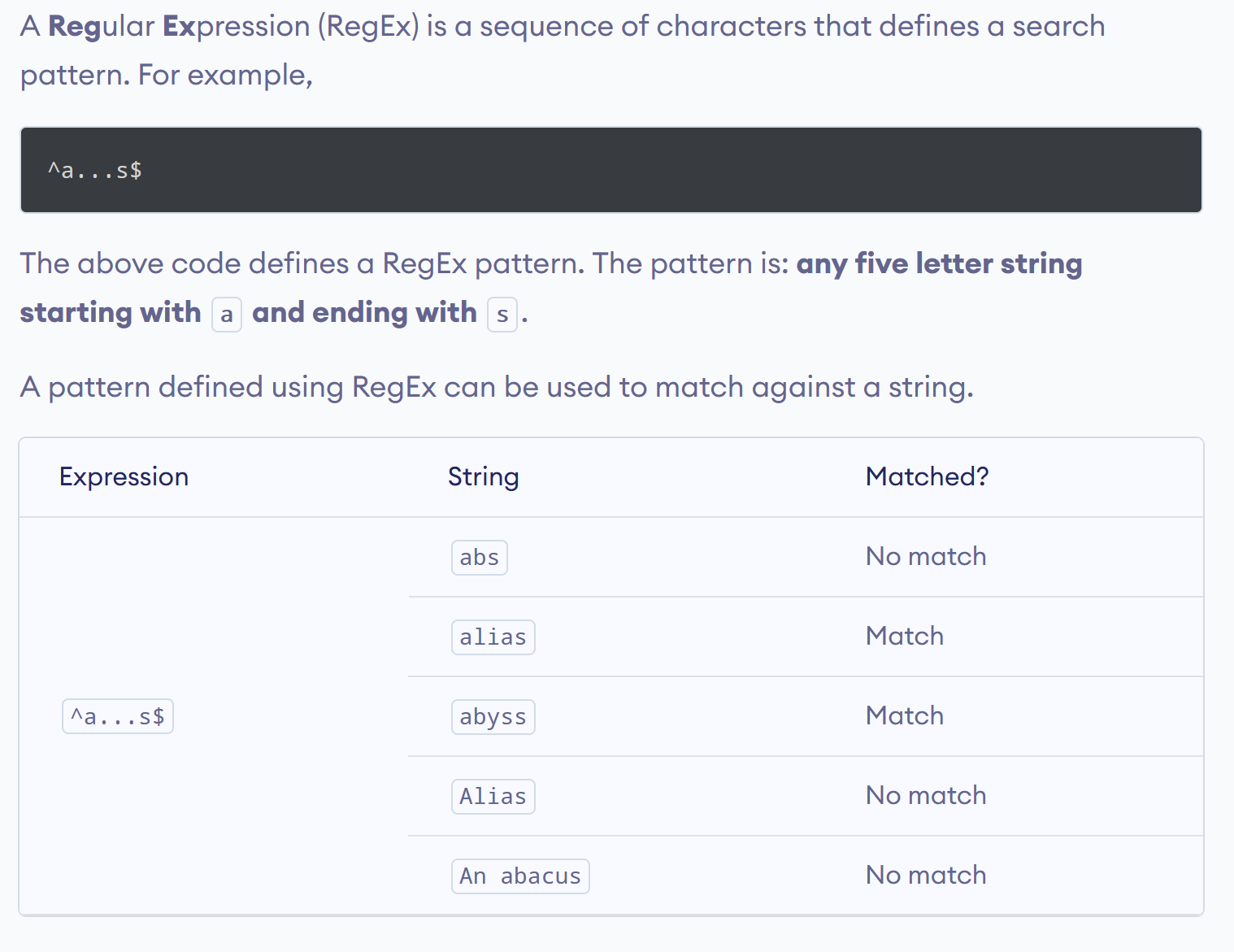


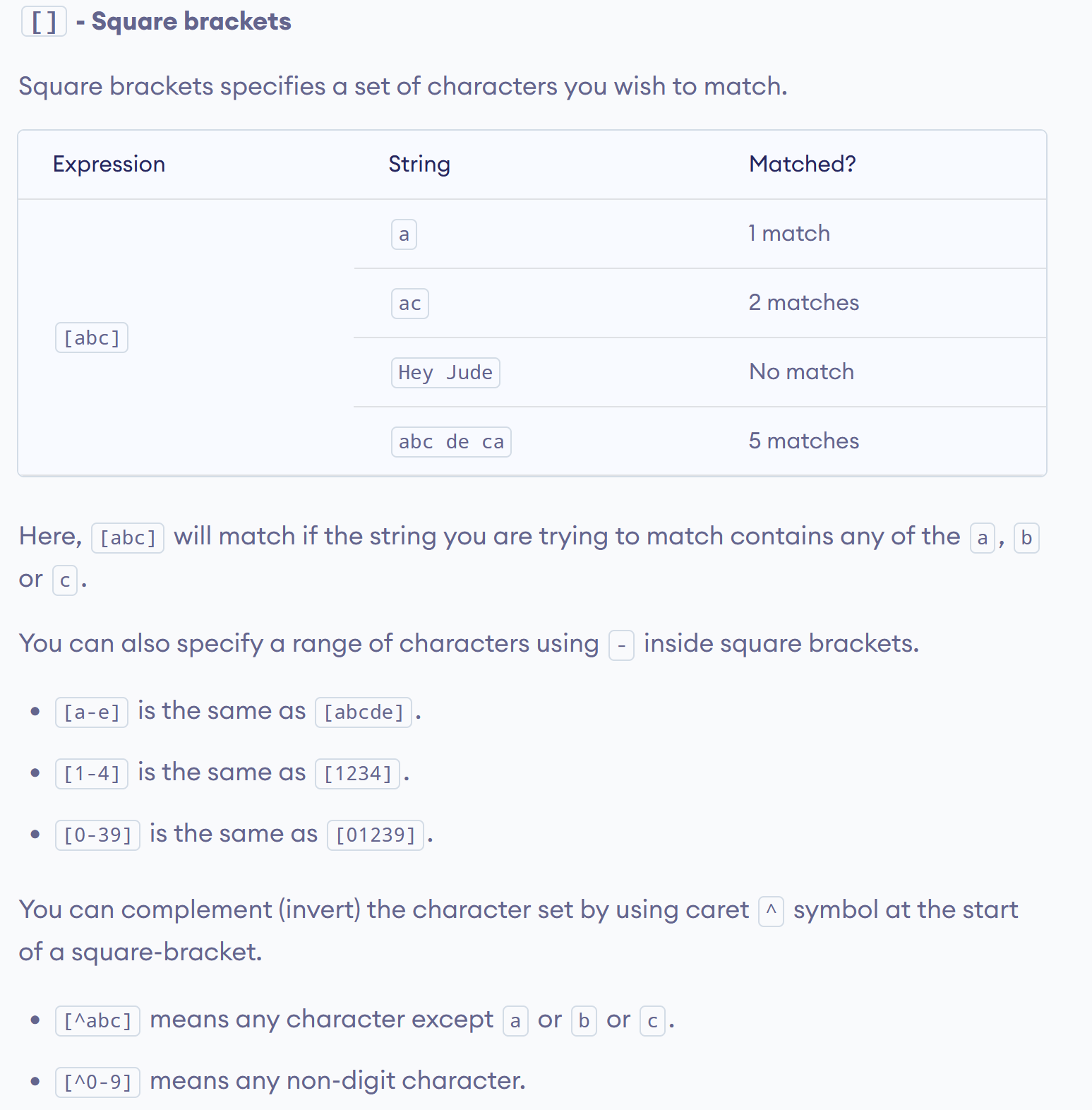
测试文档:
abc
af
b9
cuy
d09pp
1238
a1
b1
ac3
Abc
Bcd
98L
i86
a
b
c
A
N
i98a
M

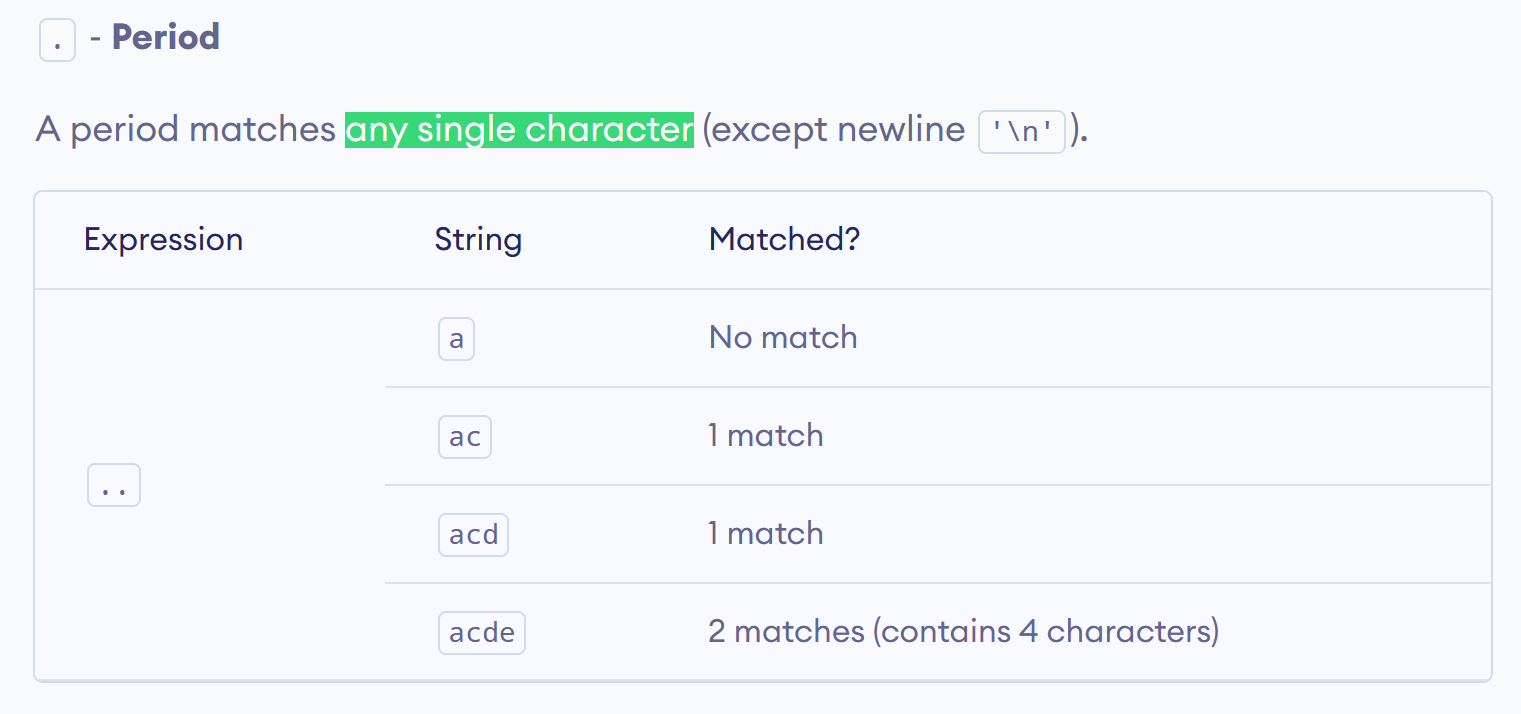
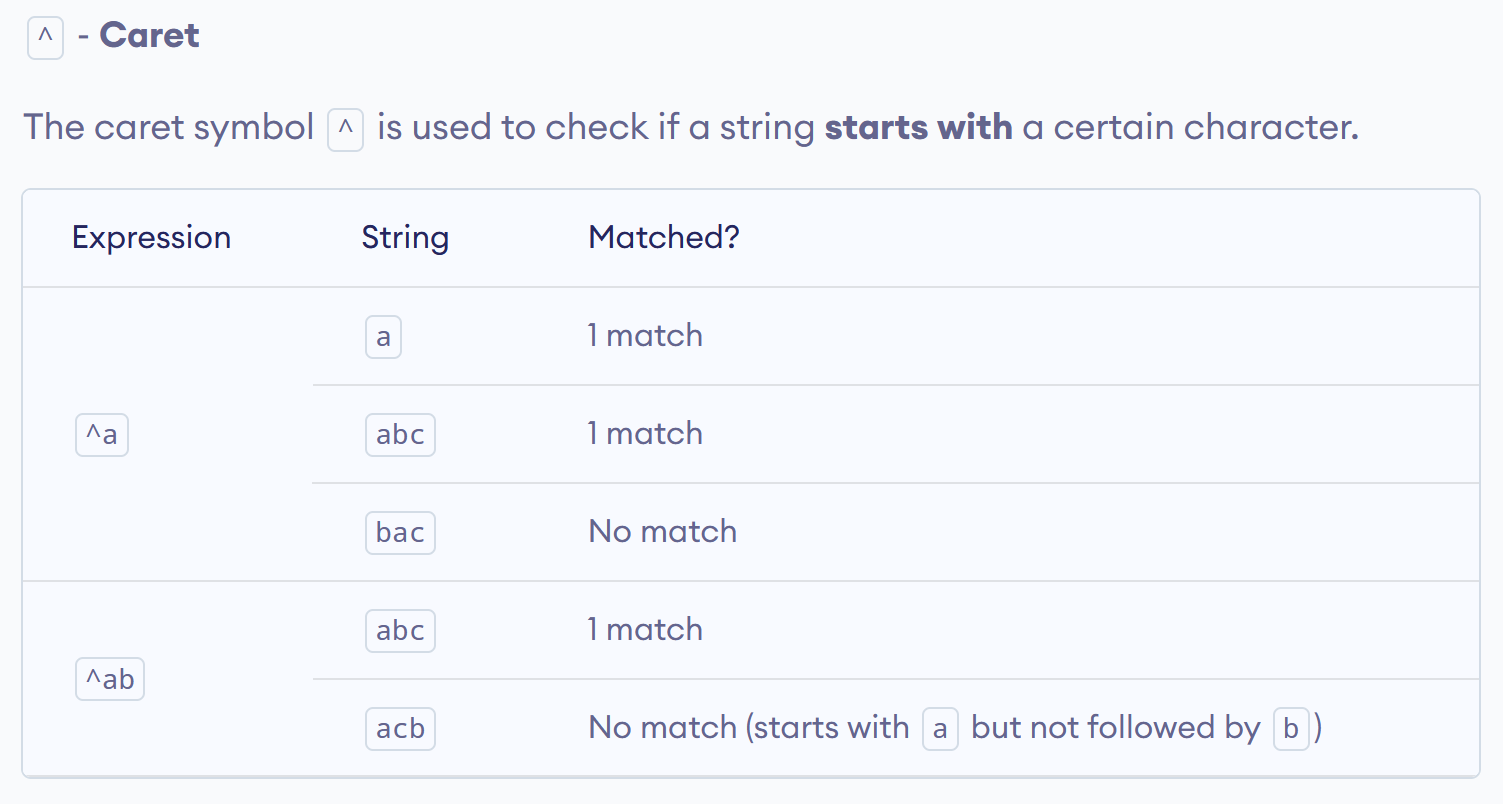
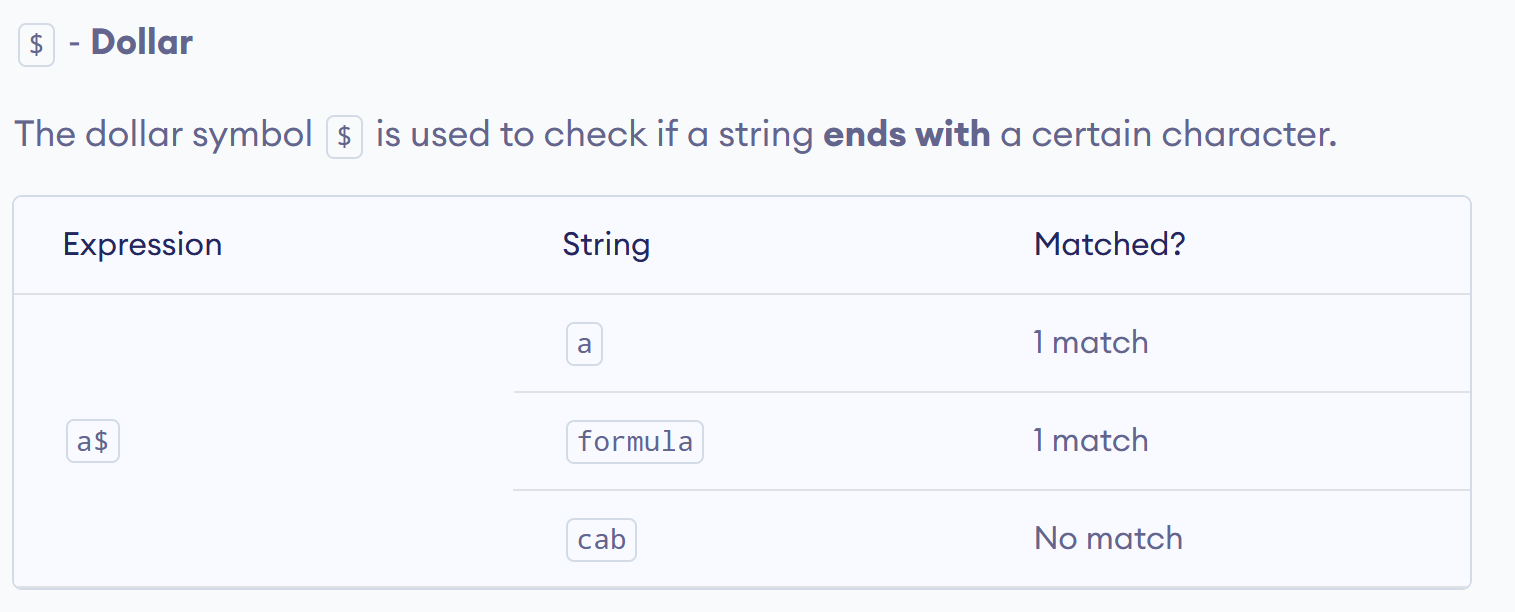
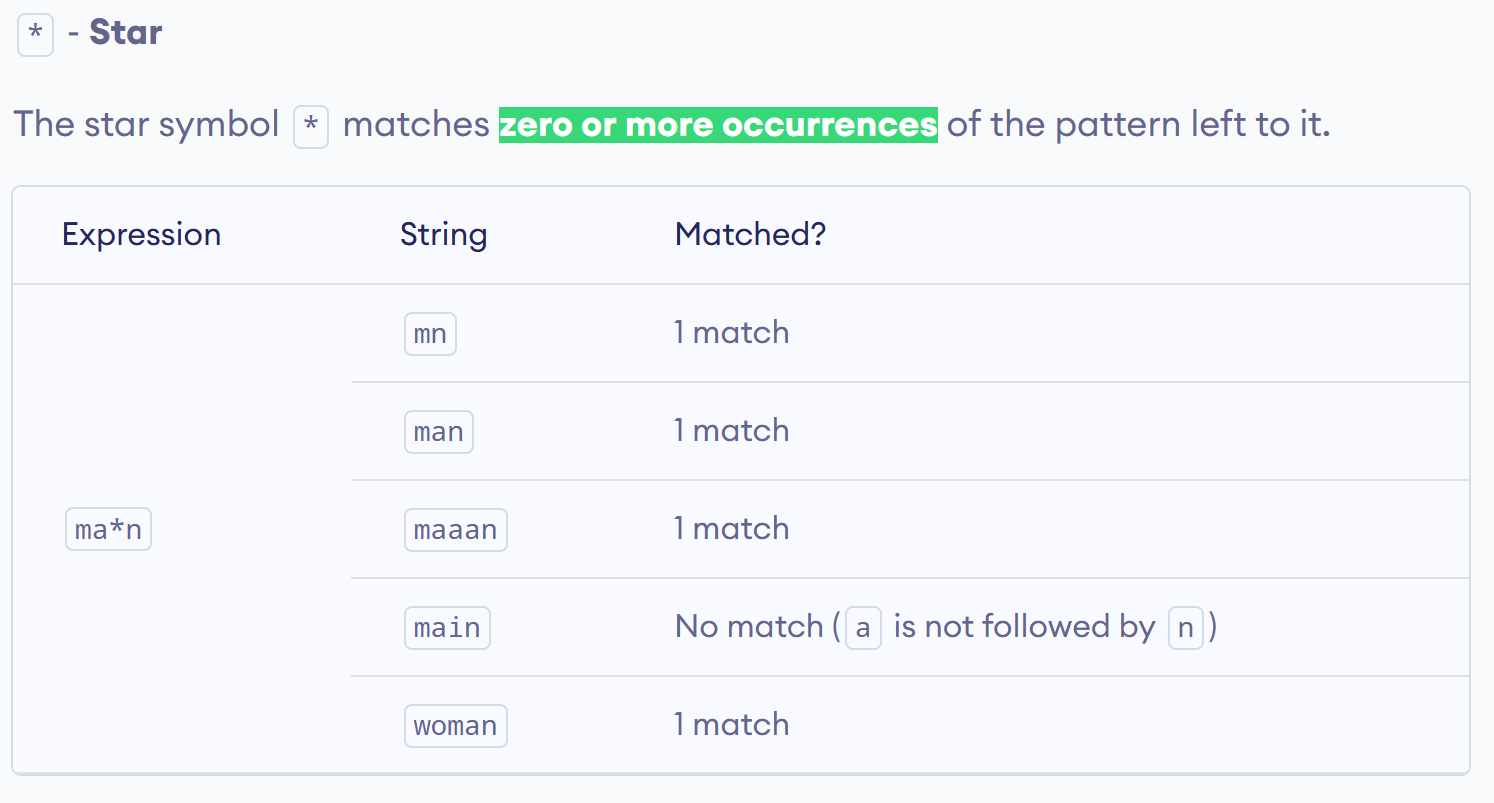
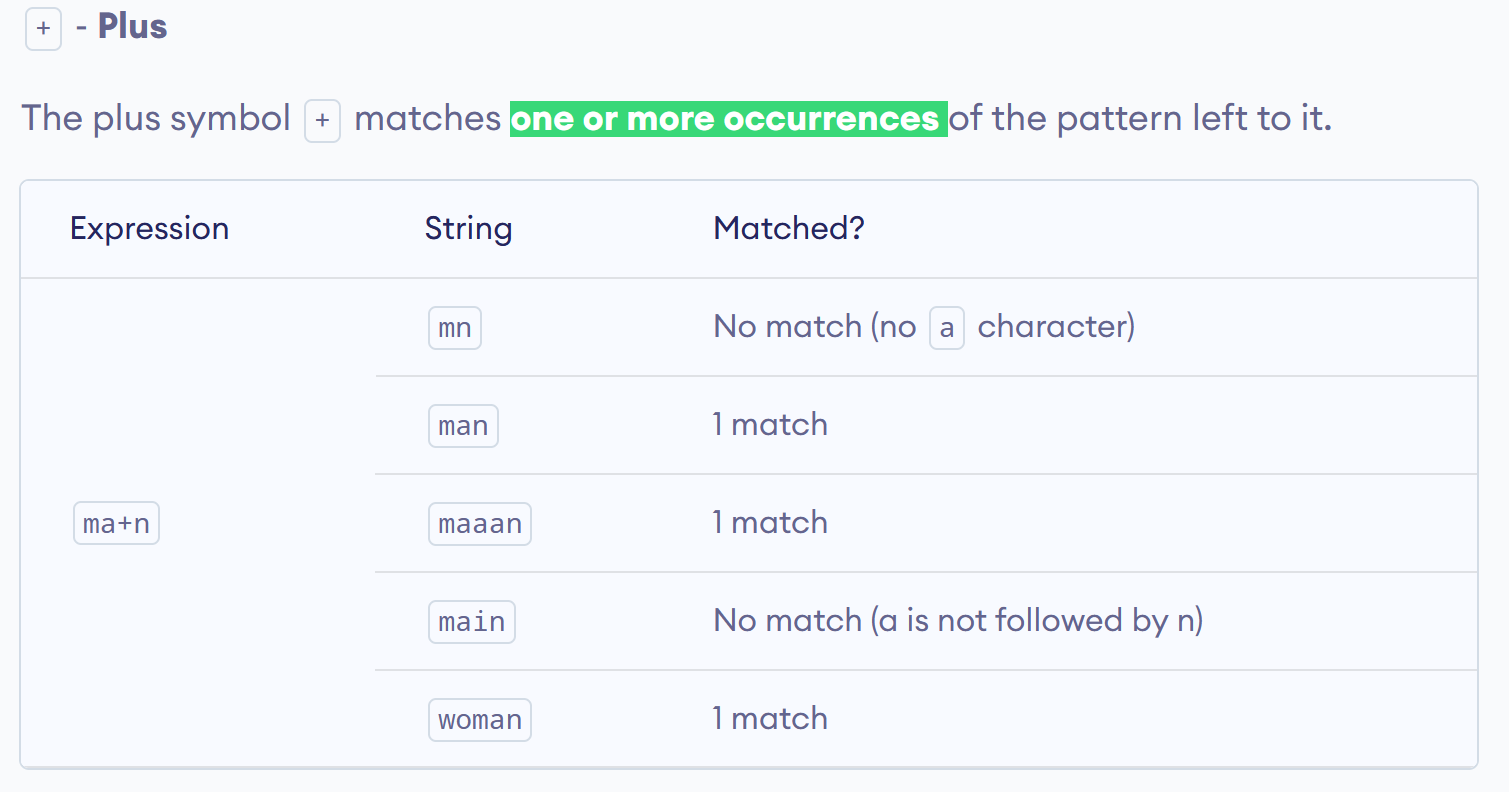
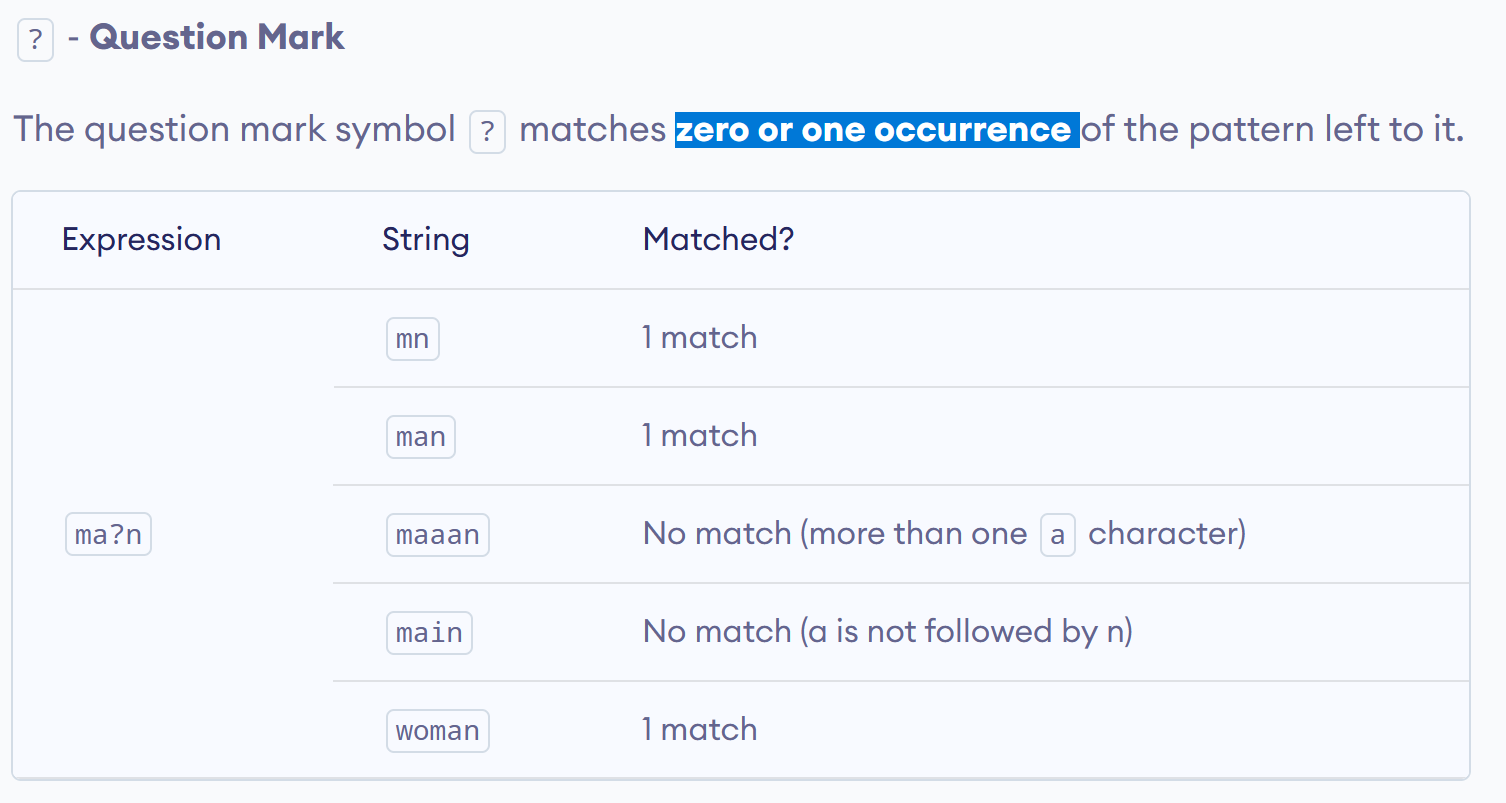
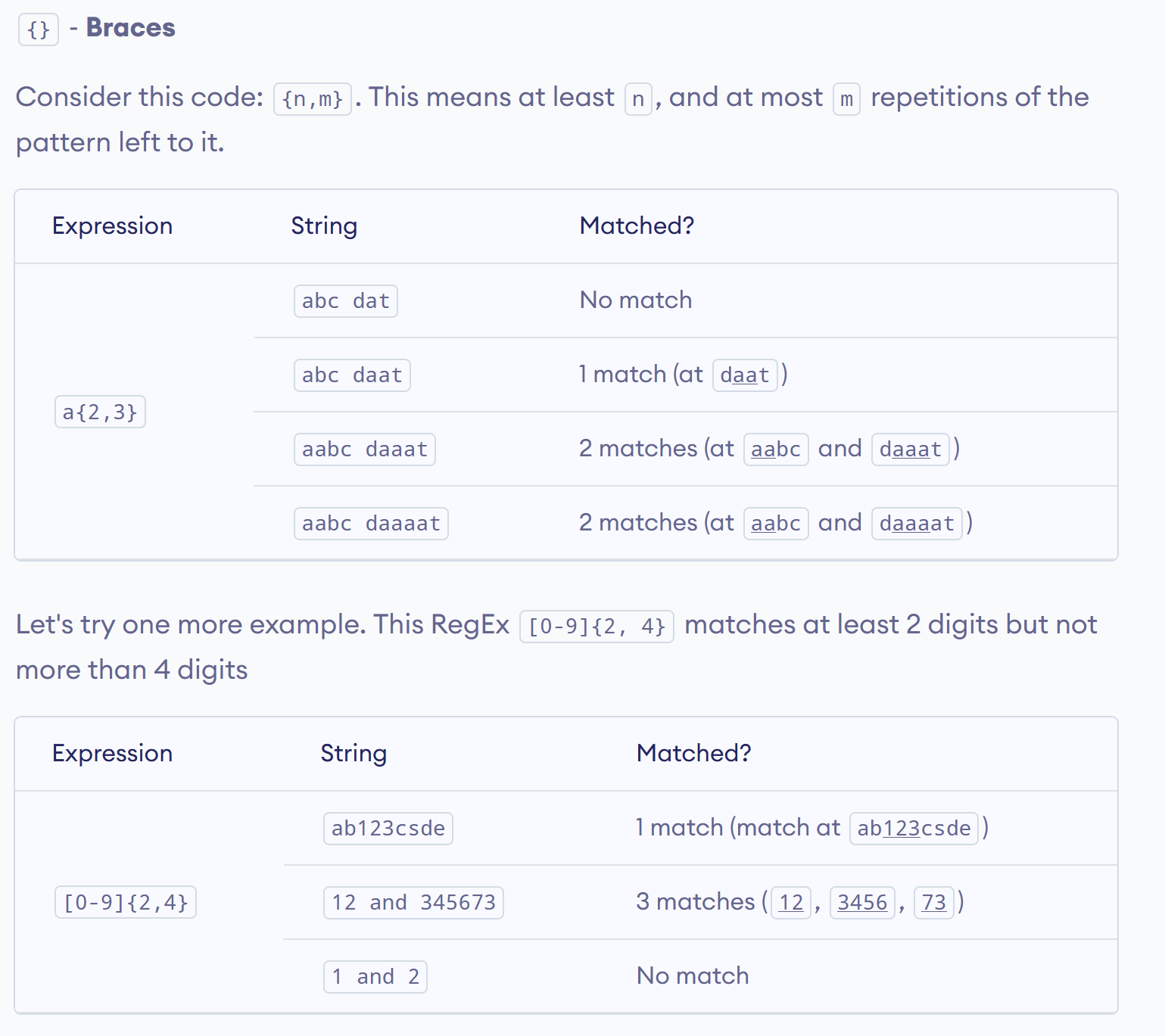

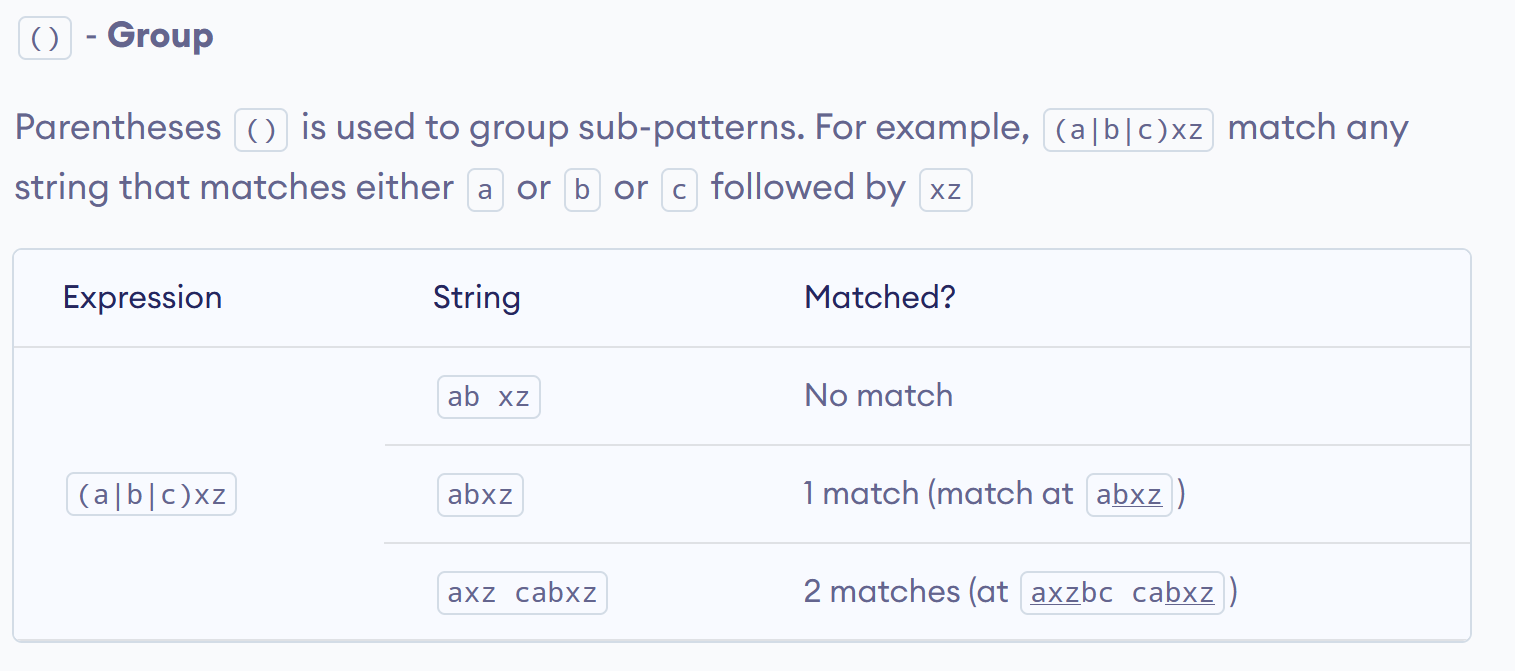
Special Sequences
Special sequences make commonly used patterns easier to write. Here's a list of special sequences:
\A - Matches if the specified characters are at the start of a string.
| Expression | String | Matched? |
|---|---|---|
\Athe |
the sun |
Match |
In the sun |
No match |
\b - Matches if the specified characters are at the beginning or end of a word.
| Expression | String | Matched? |
|---|---|---|
\bfoo |
football |
Match |
a football |
Match | |
afootball |
No match | |
foo\b |
the foo |
Match |
the afoo test |
Match | |
the afootest |
No match |
\B - Opposite of \b. Matches if the specified characters are not at the beginning or end of a word.
| Expression | String | Matched? |
|---|---|---|
\Bfoo |
football |
No match |
a football |
No match | |
afootball |
Match | |
foo\B |
the foo |
No match |
the afoo test |
No match | |
the afootest |
Match |
\d - Matches any decimal digit. Equivalent to [0-9]
| Expression | String | Matched? |
|---|---|---|
\d |
12abc3 |
3 matches (at 12abc3) |
Python |
No match |
\D - Matches any non-decimal digit. Equivalent to [^0-9]
| Expression | String | Matched? |
|---|---|---|
\D |
1ab34"50 |
3 matches (at 1ab34"50) |
1345 |
No match |
\s - Matches where a string contains any whitespace character. Equivalent to [ \t\n\r\f\v].
| Expression | String | Matched? |
|---|---|---|
\s |
Python RegEx |
1 match |
PythonRegEx |
No match |
\S - Matches where a string contains any non-whitespace character. Equivalent to [^ \t\n\r\f\v].
| Expression | String | Matched? |
|---|---|---|
\S |
a b |
2 matches (at a b) |
|
No match |
\w - Matches any alphanumeric character (digits and alphabets). Equivalent to [a-zA-Z0-9_]. By the way, underscore _ is also considered an alphanumeric character.
| Expression | String | Matched? |
|---|---|---|
\w |
12&": ;c |
3 matches (at 12&": ;c) |
%"> ! |
No match |
\W - Matches any non-alphanumeric character. Equivalent to [^a-zA-Z0-9_]
| Expression | String | Matched? |
|---|---|---|
\W |
1a2%c |
1 match (at 1a2%c) |
Python |
No match |
\Z - Matches if the specified characters are at the end of a string.
| Expression | String | Matched? |
|---|---|---|
Python\Z |
I like Python |
1 match |
I like Python Programming |
No match | |
Python is fun. |
No match |
Tip: To build and test regular expressions, you can use RegEx tester tools such as regex101. This tool not only helps you in creating regular expressions, but it also helps you learn it.
Now you understand the basics of RegEx, let's discuss how to use RegEx in your Python code.
Python RegEx
Python has a module named re to work with regular expressions. To use it, we need to import the module.
import reThe module defines several functions and constants to work with RegEx.
re.findall()
The re.findall() method returns a list of strings containing all matches.
Example 1: re.findall()
# Program to extract numbers from a string
import re
string = 'hello 12 hi 89. Howdy 34'
pattern = '\d+'
result = re.findall(pattern, string)
print(result)
# Output: ['12', '89', '34']
If the pattern is not found, re.findall() returns an empty list.
re.split()
The re.split method splits the string where there is a match and returns a list of strings where the splits have occurred.
Example 2: re.split()
import re
string = 'Twelve:12 Eighty nine:89.'
pattern = '\d+'
result = re.split(pattern, string)
print(result)
# Output: ['Twelve:', ' Eighty nine:', '.']
If the pattern is not found, re.split() returns a list containing the original string.
You can pass maxsplit argument to the re.split() method. It's the maximum number of splits that will occur.
import re
string = 'Twelve:12 Eighty nine:89 Nine:9.'
pattern = '\d+'
# maxsplit = 1
# split only at the first occurrence
result = re.split(pattern, string, 1)
print(result)
# Output: ['Twelve:', ' Eighty nine:89 Nine:9.']
By the way, the default value of maxsplit is 0; meaning all possible splits.
re.sub()
The syntax of re.sub() is:
re.sub(pattern, replace, string)The method returns a string where matched occurrences are replaced with the content of replace variable.
Example 3: re.sub()
# Program to remove all whitespaces
import re
# multiline string
string = 'abc 12\
de 23 \n f45 6'
# matches all whitespace characters
pattern = '\s+'
# empty string
replace = ''
new_string = re.sub(pattern, replace, string)
print(new_string)
# Output: abc12de23f456
If the pattern is not found, re.sub() returns the original string.
You can pass count as a fourth parameter to the re.sub() method. If omited, it results to 0. This will replace all occurrences.
import re
# multiline string
string = 'abc 12\
de 23 \n f45 6'
# matches all whitespace characters
pattern = '\s+'
replace = ''
new_string = re.sub(r'\s+', replace, string, 1)
print(new_string)
# Output:
# abc12de 23
# f45 6
re.subn()
The re.subn() is similar to re.sub() except it returns a tuple of 2 items containing the new string and the number of substitutions made.
Example 4: re.subn()
# Program to remove all whitespaces
import re
# multiline string
string = 'abc 12\
de 23 \n f45 6'
# matches all whitespace characters
pattern = '\s+'
# empty string
replace = ''
new_string = re.subn(pattern, replace, string)
print(new_string)
# Output: ('abc12de23f456', 4)
re.search()
The re.search() method takes two arguments: a pattern and a string. The method looks for the first location where the RegEx pattern produces a match with the string.
If the search is successful, re.search() returns a match object; if not, it returns None.
match = re.search(pattern, str)Example 5: re.search()
import re
string = "Python is fun"
# check if 'Python' is at the beginning
match = re.search('\APython', string)
if match:
print("pattern found inside the string")
else:
print("pattern not found")
# Output: pattern found inside the string
Here, match contains a match object.
Match object
You can get methods and attributes of a match object using dir() function.
Some of the commonly used methods and attributes of match objects are:
match.group()
The group() method returns the part of the string where there is a match.
Example 6: Match object
import re
string = '39801 356, 2102 1111'
# Three digit number followed by space followed by two digit number
pattern = '(\d{3}) (\d{2})'
# match variable contains a Match object.
match = re.search(pattern, string)
if match:
print(match.group())
else:
print("pattern not found")
# Output: 801 35
Here, match variable contains a match object.
Our pattern (\d{3}) (\d{2}) has two subgroups (\d{3}) and (\d{2}). You can get the part of the string of these parenthesized subgroups. Here's how:
>>> match.group(1)
'801'
>>> match.group(2)
'35'
>>> match.group(1, 2)
('801', '35')
>>> match.groups()
('801', '35')
match.start(), match.end() and match.span()
The start() function returns the index of the start of the matched substring. Similarly, end() returns the end index of the matched substring.
>>> match.start()
2
>>> match.end()
8The span() function returns a tuple containing start and end index of the matched part.
>>> match.span()
(2, 8)match.re and match.string
The re attribute of a matched object returns a regular expression object. Similarly, string attribute returns the passed string.
>>> match.re
re.compile('(\\d{3}) (\\d{2})')
>>> match.string
'39801 356, 2102 1111'
We have covered all commonly used methods defined in the re module. If you want to learn more, visit Python 3 re module.
Using r prefix before RegEx
When r or R prefix is used before a regular expression, it means raw string. For example, '\n' is a new line whereas r'\n' means two characters: a backslash \ followed by n.
Backlash \ is used to escape various characters including all metacharacters. However, using r prefix makes \ treat as a normal character.
Example 7: Raw string using r prefix
import re
string = '\n and \r are escape sequences.'
result = re.findall(r'[\n\r]', string)
print(result)
# Output: ['\n', '\r']
